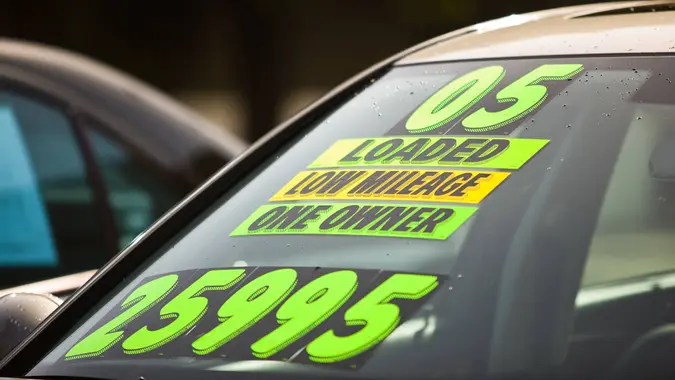When and How To Switch Car Insurance Companies

Commitment to Our Readers
GOBankingRates' editorial team is committed to bringing you unbiased reviews and information. We use data-driven methodologies to evaluate financial products and services - our reviews and ratings are not influenced by advertisers. You can read more about our editorial guidelines and our products and services review methodology.

20 Years
Helping You Live Richer

Reviewed
by Experts

Trusted by
Millions of Readers
Switching car insurance providers might not be the first thing on your mind, but doing so at the right time can save you a surprising amount of money.
If you’re wondering when to make the switch and how to do it smoothly, this guide is for you. Let’s break down the steps and find out how to snag the best deal with the least hassle.
Knowing When To Switch
Your Renewal Notice Arrives
When you receive your renewal notice, it’s the perfect time to pause and review. Most companies send this out about 30 to 45 days before your current policy expires.
This notice often includes any rate changes. If your rates are going up without any clear reason (like a recent accident or traffic violation), it might be time to start shopping around.
After a Major Life Change
Life changes can affect your car insurance rates. If you’ve moved to a new state, married, bought a new car or even retired, these milestones can impact your premiums.
Each insurance company weighs these factors differently, so if your situation changes, you might find a better rate elsewhere.
You’re Not Satisfied with Your Current Provider
Customer service matters. If you’re frustrated with the service, whether it’s slow claims processing or unhelpful customer support, looking for a new insurer might be beneficial.
Spotting Better Deals
If you notice another insurance company offering better perks, like lower rates, better coverage options or attractive discounts for things like being a safe driver, it’s worth considering a switch.
How To Switch Smoothly
Start with Research
Before jumping ship, do your homework. Look up potential insurance companies’ reviews and ratings for customer service, claims handling and financial stability.
Websites like J.D. Power and Consumer Reports can be great resources for this.
Compare Quotes
Get quotes from several insurance companies. Make sure each quote is for the same level of coverage, deductibles and any additional features you need, like roadside assistance. This will help you compare apples to apples.
Check for Penalties and Cancelation Policies
Before you cancel your current insurance, check if there are any cancellation fees or specific procedures you need to follow. Some companies may require a written notice or have a specific timeframe for cancellation.
Make the Switch Before Your Old Policy Expires
Timing is important. Ensure your new policy starts before your old one expires to avoid any gap in coverage, which can be legally risky and more costly in the long run.
Notify Your Current Provider
Once you’ve chosen a new insurer and have your start date confirmed, inform your current insurer of your decision to cancel. Provide them with the necessary documentation and follow their procedures to ensure a smooth transition.
Confirm Cancellation and Coverage Start
After notifying your current provider, make sure you receive confirmation that your policy has been canceled, and verify that your new policy is active. This prevents any overlaps or gaps in coverage.
Final Tips
- Document Everything: Keep records of all correspondence with both your old and new insurance providers, including confirmation of the cancellation and the start of the new policy.
- Understand Your Coverage: Be sure you know what your new policy covers. Take the time to understand your deductibles, limits and any exclusions.
- Regularly Review Your Policy: Make it a habit to review your car insurance policy annually. Your needs can change, and so can the deals available in the market.
With a little effort and the right timing, you can potentially save hundreds of dollars and enhance your coverage.
Editor's note: This article was produced via automated technology and then fine-tuned and verified for accuracy by a member of GOBankingRates' editorial team.
 Written by
Written by  Edited by
Edited by 

























